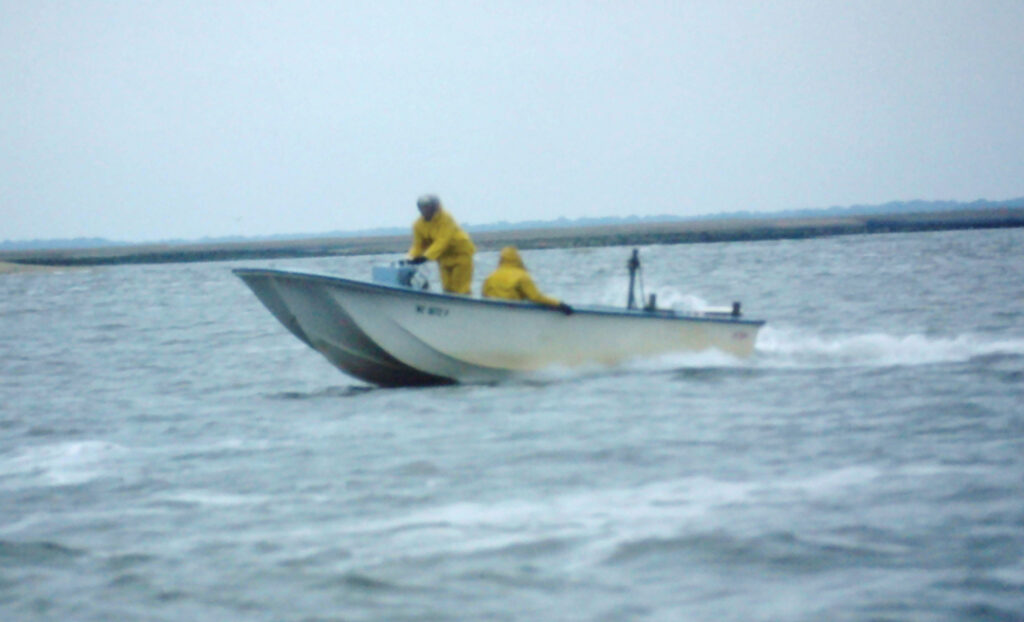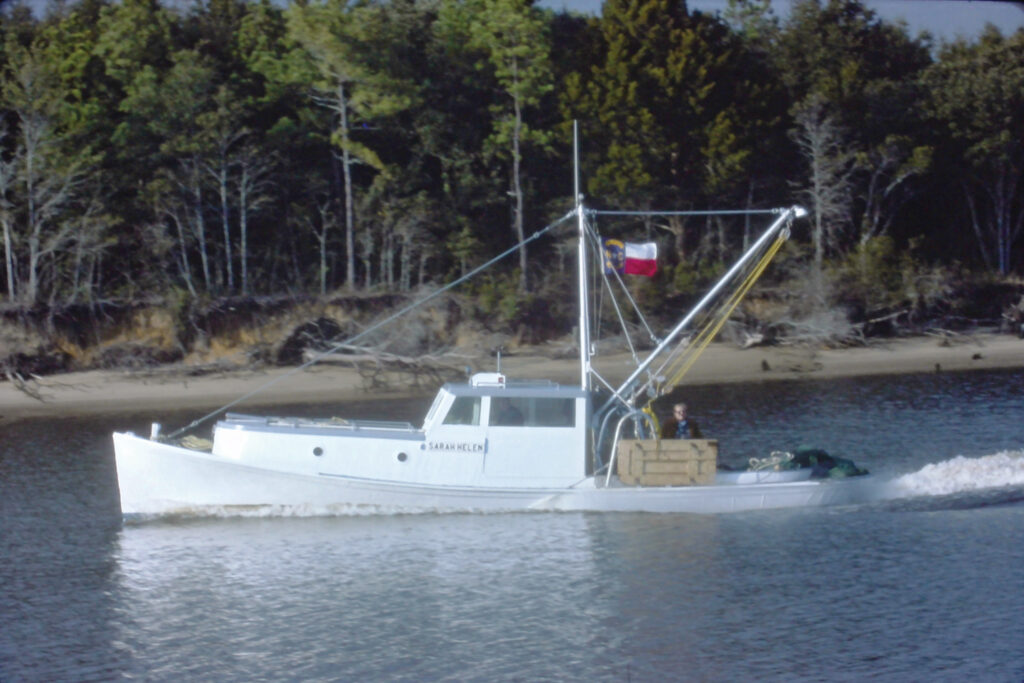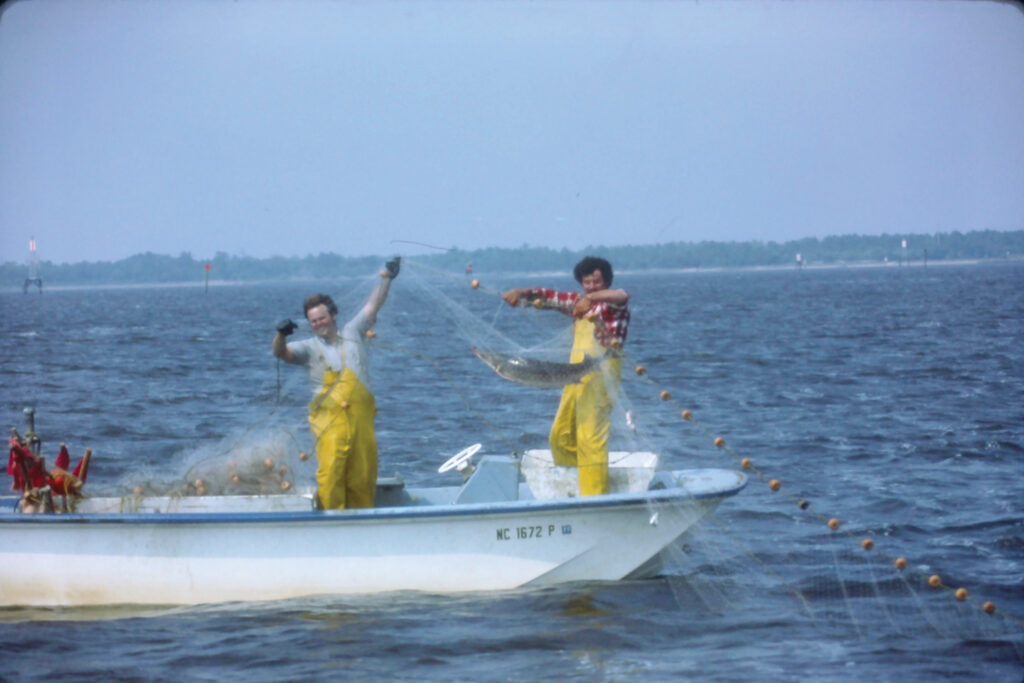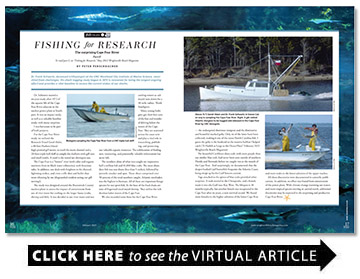Fish Tales: Fishing for Research
Part II: The surprising Cape Fear River
BY Peter Perschbacher

To read part I, see “Fishing for Research,” May 2022 Wrightsville Beach Magazine
Dr. Frank Schwartz, deceased ichthyologist at the UNC Morehead City Institute of Marine Science, never shied from challenges. His shark tagging study begun in 1972 is renowned for being the longest ongoing effort and provides a vital baseline to assess the current status of our sharks.
Dr. Schwartz started a six-year study after 1972 of the aquatic life of the Cape Fear River adjacent to the nuclear power plant at Southport. It was an impact study, as well as a valuable baseline study, with many surprises.
I was fortunate to be part of both projects.
For the Cape Fear River study, we utilized the Research Vessel Sarah Helen, a 40-foot Harkers Island high-prowed gill netter, to trawl the main channel and a 20-foot triple hull skiff to sample the shallows with gill nets and small trawls. A trawl is the towed net shrimpers use.
The Cape Fear is a “brown” river (with color and organic nutrients from its black water tributaries), with ferocious tides. In addition, one deals with freighters in the channel, lightning strikes, and even a rifle shot and bullet that went whizzing by me (disgruntled resident seeing our gill netting?).

The study was designed around the Brunswick County nuclear plant to assess the impact of entrainment from use of river water for cooling on the larger fauna (crabs, shrimp and fish). It was decided to use river water and not cooling towers as salt would rain down for a 10-mile radius. Think Southport.
Many young biologists got their first taste of the fun and wonder of delving below the waters of the Cape Fear. They are scattered across the coast now and play a vital role in researching, publishing, and protecting our valuable aquatic resources. The exhilaration of finding new, interesting, and potentially valuable information has never left.
The numbers alone of what was caught are impressive: half a million fish and 81,000 blue crabs. The most abundant fish was star drum (less than 5 inches), followed by juvenile croaker and spot. These three comprised over 50 percent of the total numbers caught. Atlantic menhaden was the highest in biomass. All of these are important forage species for our sport fish. At the base of the food chain are tons of fingernail-sized mysid shrimp. They utilize the rich detritus-laden waters of the Cape Fear.
We also recorded some firsts for the Cape Fear River — the endangered shortnose sturgeon and the diminutive and beautiful marked goby. Only six of the latter have been collected, making it one of the rarest North Carolina fish. I guess the goby is the bookend to the massive halibut I helped catch (“A Flatfish as Large as the Ocean Floor” February 2022 Wrightsville Beach Magazine).

The beautiful Caribbean dana crab, with more purple than our similar blue crab, had never been seen outside of southern Florida and Bermuda before we caught two at the mouth of the Cape Fear. And surprisingly, we documented that the deeper-bodied Gulf butterfish frequents the Atlantic Coast, being swept up by the Gulf Stream current.
Tags attached to the spines of blue crabs provided other surprises. A male moved to the Chesapeake, and a female made it into the Gulf near Key West. The lifespan is 18 months typically, but another female was recaptured in the Cape Fear after six years, a new survival record. We found more females in the higher salinities of the lower Cape Fear and more males in the lower salinities of the upper reaches.
All these discoveries were documented in scientific publications. In addition, no effect was found from entrainment of the power plant. With climate change warming our waters and more tropical species moving or carried north, additional discoveries may be expected in the surprising and productive Cape Fear River.
